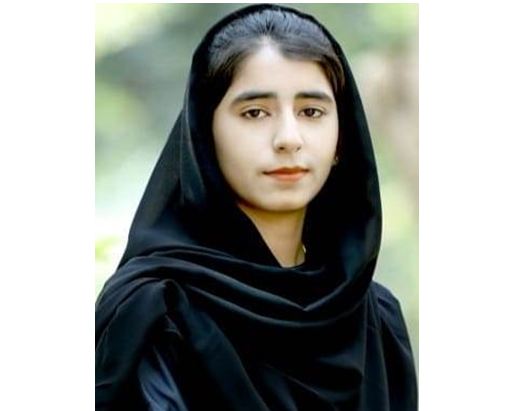Fatima Mushtaq
The Northern Areas is an administrative region of Pakistan, with its capital in Gilgit. It is home to the Karakoram Range, which boasts more than sixty peaks with heights above 7,000 meters. Northern Pakistan, also known as Small Pakistan, is a specific tourism region located in the northern and northwestern parts of Pakistan.
It comprises Gilgit-Baltistan, Khyber Pakhtunkhwa, and the Pothohar Plateau in Punjab. The Northern Areas are the most remarkable and captivating region of Pakistan, where the three famous mountain ranges, the Hindukush, the Himalayas, and the Karakoram, meet. The northern areas of Pakistan attract tourists due to their abundance of beautiful meadows, snow-capped peaks, mountains, lakes, trees, and glaciers. Geographically, the Northern Areas are administratively divided into two divisions, which are further divided into seven districts. The two Baltistan districts are Ghanch and Skardu, and the five Gilgit districts are Gilgit, Diamer, Ghizer, Astore, and Hunza-Nagar. Gilgit-Baltistan is the northernmost region of Pakistan. The best time to visit the northern areas is from June to August when the weather is warm, and the plants and flowers are in full bloom, providing a great experience for nature enthusiasts. The northern areas are generally cold due to their high altitude, although the temperature is somewhat higher on the Balochistan plateau. The coastal areas are influenced by sea breezes. The northern areas of Pakistan have been a peaceful tourist region for decades, with only a few incidents of harassment reported. Most travelers have had easy and safe experiences in Hunza. Chapursan Valley is a remote and beautiful valley in the northern areas of Pakistan.
The northern areas of Pakistan have several features that attract tourists. They are blessed with plenty of meadows, snow-capped peaks, valleys, mountains, tall trees, lakes, rivers, grassy lands, beautiful weather, and snowfall, among others. It is in this region that the Himalayas, the Hindu Kush, and the Karakoram mountain ranges meet. Hunza Valley is a particularly beautiful tourist destination, offering a rich history, culture, and colorful traditions. The beautiful environment and cool temperatures, even in summer, are among the key attractions. The northern areas allow visitors to witness the beauty of the world and experience different aspects of nature.
Islamabad: The federal territory of Islamabad is considered part of northern Pakistan due to its mountainous region straddling the Himalayas, Karakoram, and Hindu Kush ranges. It is home to some of the highest peaks and longest glaciers outside the Polar Regions.
Murree: A mountain resort city located in the Galyat region of the PirPanjal Range, Murree is known as Pakistan’s most recognized hill station. It offers breathtaking scenery and a cool climate, making it a popular destination throughout the year.
NaranKaghan: Situated along the flow of the River Kunhar, this valley is renowned for its glaciers, crystal-clear lakes, waterfalls, and frosty mountain streams. Naran Valley is adjacent to Kaghan Valley, and both are collectively referred to as Kaghan-Naran.
Hunza: Among the most beautiful areas of Pakistan, Hunza Valley is often called “Heaven on Earth.” It is a mountainous valley located in the region of Gilgit-Baltistan and is known for its snow-capped mountains and rugged landscapes. Hunza Valley is divided into three regions: Upper Hunza, Central Hunza, and Lower Hunza, each consisting of various villages and towns.
Khunjerab Pass: The highest pass in Pakistan, Khunjerab Pass serves as the border between China and Pakistan. Located in the Karakoram Range, it is the highest concrete international crossing point and the highest point on the Karakoram Highway.
Gilgit-Baltistan: A mountainous region bordering Khyber Pakhtunkhwa, Azad Kashmir, China, and India, Gilgit-Baltistan is famous for its natural beauty, including snow-capped mountains, cold deserts, and lush forests. It is a popular destination for mountaineers, trekkers, and landscape enthusiasts. Notable peaks in the region include K2, Nanga Parbat, and Rakaposhi.
Fairy Meadows: Located near the base camp of Nanga Parbat in the Diamer District of Gilgit-Baltistan, Fairy Meadows is beautiful grassland known for its stunning views and proximity to the ninth tallest mountain in the world. It is surrounded by alpine trees and offers a picturesque setting.
Skardu: Skardu is a city situated in Gilgit-Baltistan, known for its high mountains, blue waters, and rich cultural heritage. It serves as a gateway to the Gilgit-Baltistan region and offers various attractions, including lakes, forts, and national parks. Skardu is famous among mountaineers and climbers.
Chitral Valley: Located in the northern area of Khyber Pakhtunkhwa, Chitral Valley is renowned for its natural beauty, simplicity of its residents, and unique culture. It is nestled in the Hindukush range and offers attractions such as forts, polo grounds, and the famous Kalash Valley.
Swat Valley: Known as the “Switzerland of Pakistan,” Swat Valley is celebrated for its snow-capped mountains and scenic landscapes. It has undergone significant security improvements in recent years, making it a popular tourist destination. Mingora, the largest district in Swat, offers attractions like the Swat Museum and Mingora City Bazaar.
Kalam Valley: Located in the northern part of the Swat Valley, Kalam Valley is known for its picturesque beauty, stunning mountains, and proximity to the Swat River. It offers a unique flora and fauna and is a popular destination for nature lovers.
Kumrat Valley: Situated in the Upper Dir district of Khyber Pakhtunkhwa, Kumrat Valley is known for its natural beauty, including lush green forests, snow-capped mountains, rivers, and waterfalls. It attracts tourists with its foggy mountains and captivating scenery.
These are just a few of the many incredible places to visit in the northern areas of Pakistan, each offering its own distinct charm and natural wonders. The Northern Areas of Pakistan, with its administrative capital in Gilgit, is a region of outstanding beauty and captivating landscapes. This specific tourism region comprises Gilgit-Baltistan, Azad Kashmir, Khyber Pakhtunkhwa, and the Pothohar Plateau in Punjab. The Northern Areas are characterized by the convergence of three world-famous mountain ranges: the Hindukush, the Himalayas, and the Karakoram. This region attracts tourists from around the world due to its abundance of stunning meadows, snow peaks, mountains, lakes, and glaciers. The Northern Areas of Pakistan are a treasure trove of natural wonders, cultural heritage, and warm hospitality. With its diverse range of attractions and breathtaking landscapes, this region continues to attract tourists from around the world, providing them with an unforgettable experience amidst the splendor of nature. At the end, I thank to Respected Sir Dr. Muhammad Akram Zaheer for his valuable source of guidance to write this piece. He generously shared his time and knowledge, providing me with valuable feedback and constructive criticism that has significantly improved the quality of my work. His patience, encouragement, and willingness to engage in meaningful discussions have been truly inspiring.
Fatima Mushtaq
BS Health and Nutrition
University of Okara











